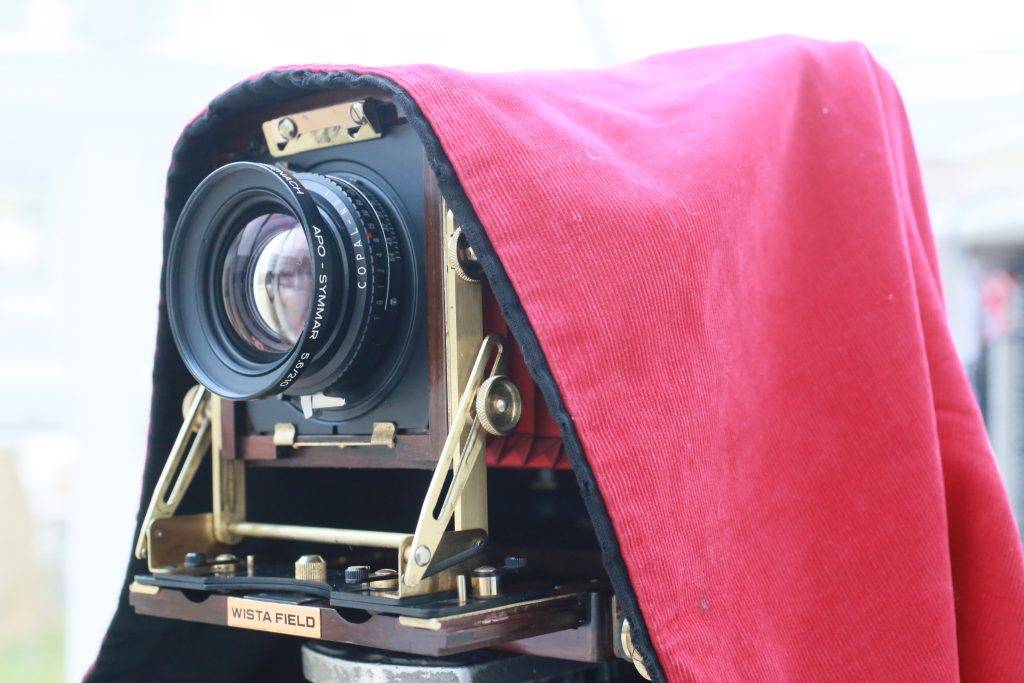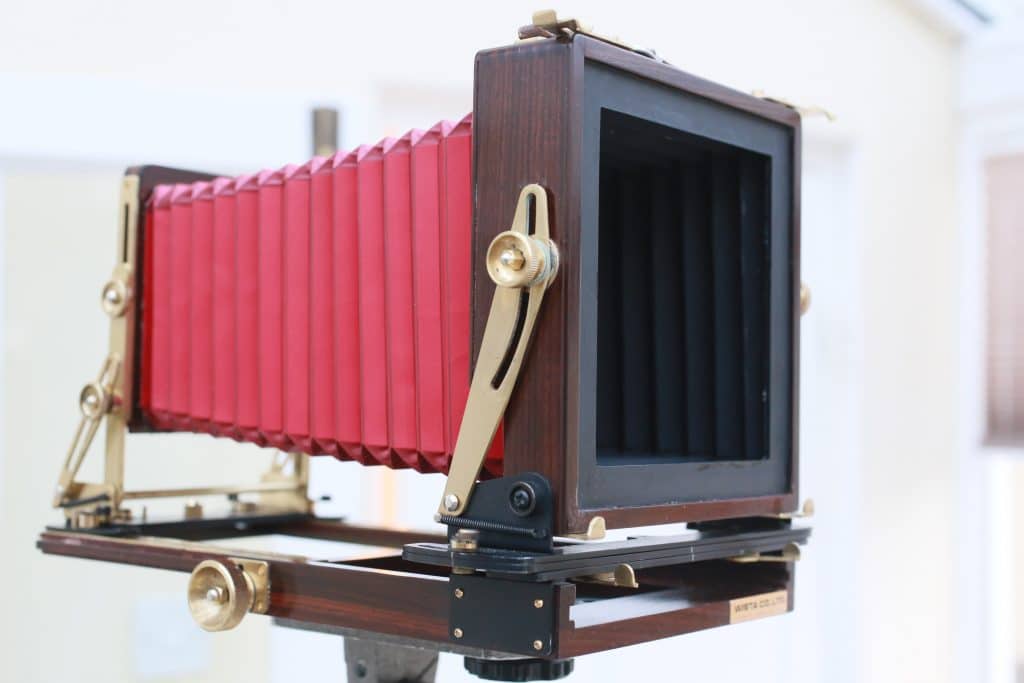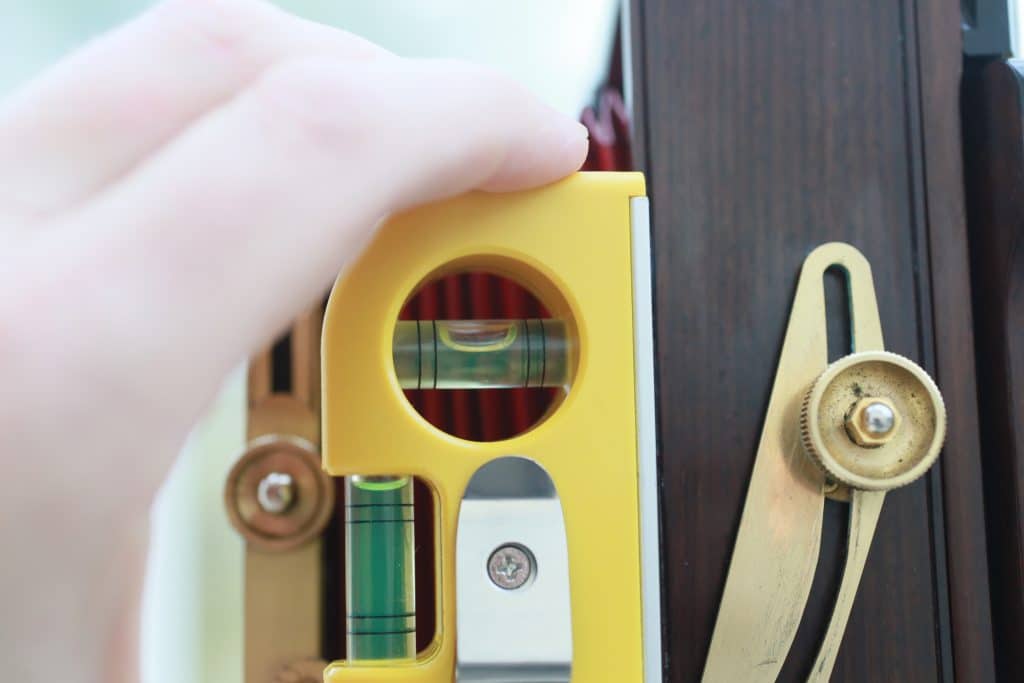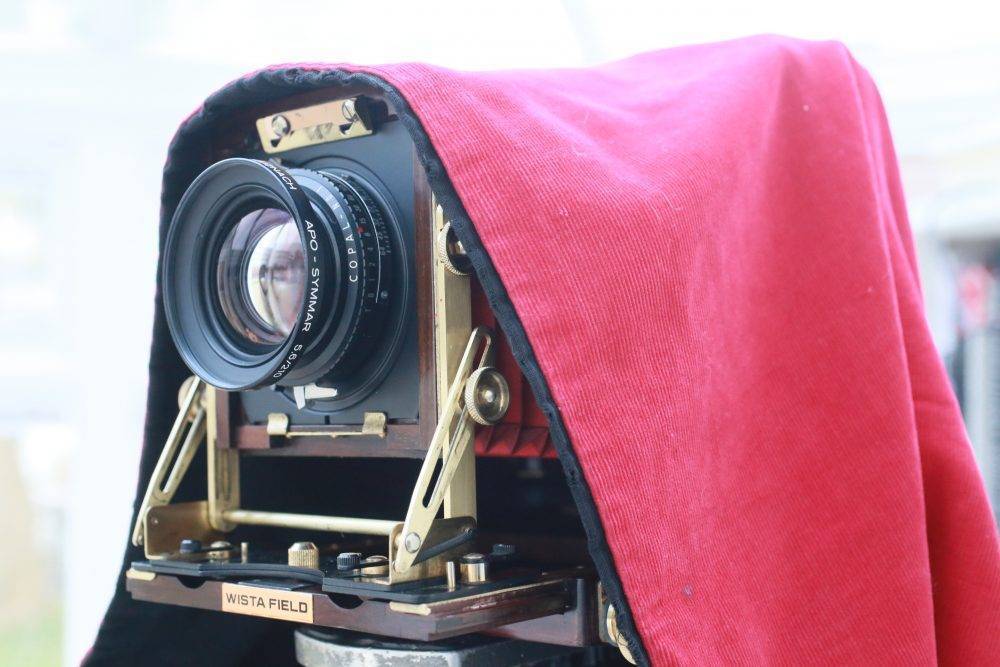
If you have just bought a used large format camera, chances are you are itching to go out and shoot some pictures. However, before you start using expensive sheets of film, there are some essential checks you can do to make sure the camera is working as it should do. Even if you have owned your camera for a while, it still makes sense to perform these checks periodically.

The Bellows
I have bought two used large format cameras and both of them have had pinholes in the bellows. It seems to be the most common problem with these types of cameras. Check for light leaks regularly. The easiest method is to remove the rear ground glass frame, go into a darkened room and shine a light from inside the camera. Any pinholes should be obvious. Thankfully, if the bellows are really bad you can get replacements pretty easily.
Custom bellows in the UK make bellows for many of the most famous names in the large format world and will make bellows for any camera. All you need to do is supply the measurements of you old bellows. Prices are pretty reasonable. I bought a set of bellows for my Wista 4×5 for around £100 if I remember correctly. Bellows are also available from Chinese makers on Ebay, but the quality can vary.
If you are on a budget and the condition of your existing bellows isn’t too bad you can fix pinholes with black electrical tape or black T-shirt paint. T-shirt paint has rubber in the mixture that fills small holes nicely. It is also good practice to drape your dark cloth over the bellows before making an exposure, especially in bright weather. This was a habit that almost all large format photographers had in the pre-digital era. Newcomers to large format have not picked up the habit, but it is a good one to get into. Sooner or later it will save your skin.
Fittings and Body
Next check that all the controls function as they should. Check for loose fittings and knobs that won’t lock down. There is a certain amount of redundancy in most camera designs. So if one knob on a control is faulty, the other one should be enough to hold things steady in most circumstances. If the camera won’t lockdown then look into getting it repaired. Alternatively, consider returning it if you have just bought it. Also look for damage to the frames of the camera such as splits in the wood, or impact damage from the camera being dropped. Some splits can be fixed by gluing them back together and clamping the join, other damage may be more problematic.

Check that the standards are perpendicular and parallel
This is one of the most important checks to make sure you have accurate control of the plane of focus. After setting up you camera, make sure the base is completely level by using a small spirit level. Then with both standards in their zero detents check that they are perpendicular with the bed of the camera. Check that the ground glass is perpendicular too. If your camera has spirit levels check these are accurate by using another level you know to be accurate.
Accuracy of the ground glass.
It is quite possible that the ground glass has been replaced at some point. If it was done by a previous owner and not a technician then it makes sense to check that it is fitted correctly in the camera. You can do this by setting the camera up to shoot a letter or something similar at a 45 degree angle. Then focus on a single line of text with the lens wide open. Develop the film and see if the focus on the film matches your ground glass. Ideally you need to do this with a film holder you know to be in good condition. A warped or faulty holder could produce the same error as a misaligned screen.
Lens Board
Your lens board should fit the camera correctly and have no cracks or holes. If the board is wooden check it isn’t warped. Otherwise you should be fine.
